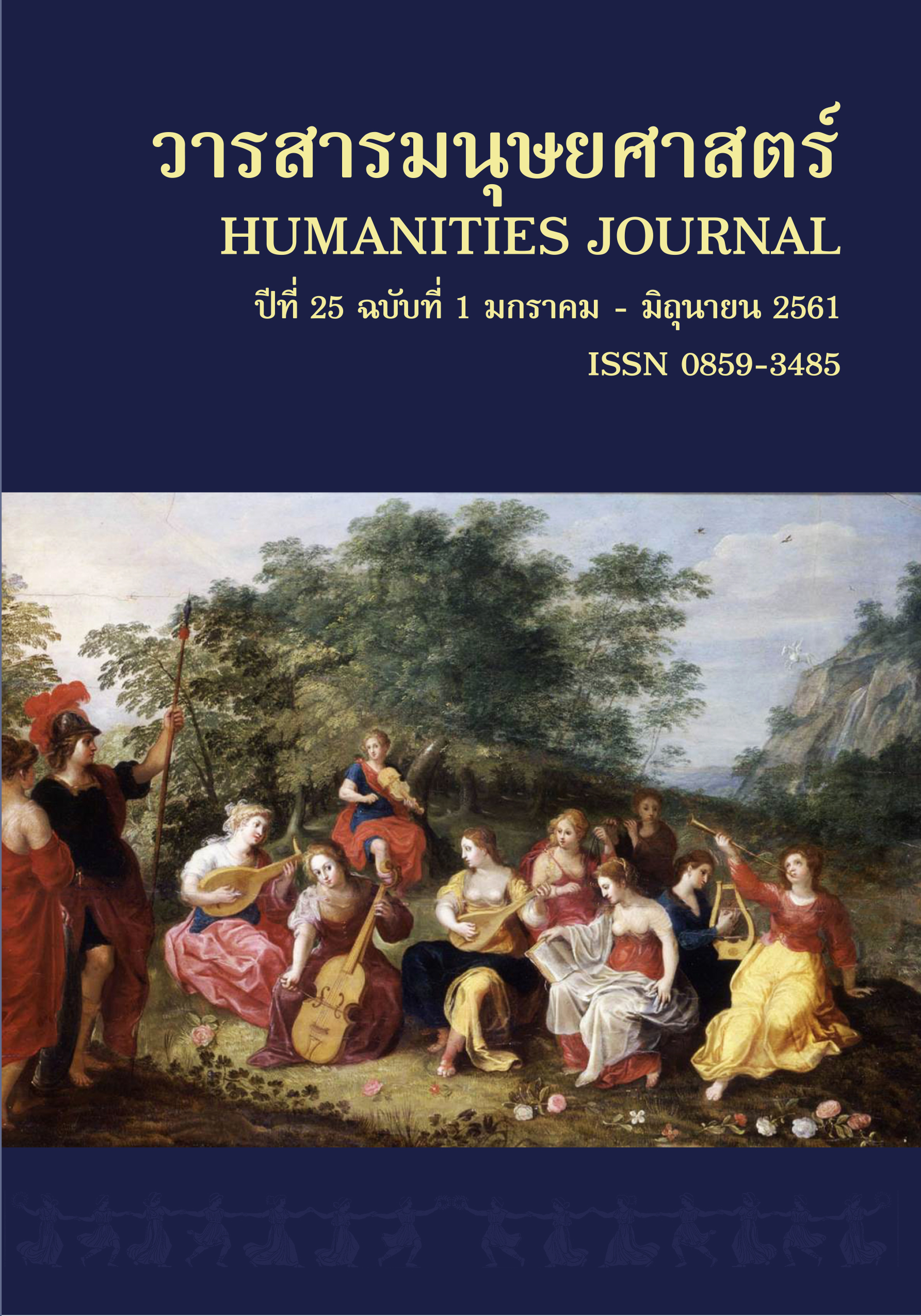An Analysis of Slogans of Airline Business Using Ideational Metafunction
Main Article Content
Abstract
This study used a mixed method with the following purposes: 1) to investigate the number of the words used in airline business advertising slogans, 2) to identify the keywords frequently used in airline business advertising slogans, and 3) to explain the idea of airline business advertising slogans by using ideational metafunction. The data were collected by gathering 267 slogans from official airline websites in 2016. The findings of the study were as follows: 1) there were largest number of 3-words slogan followed by 4-words and 5-words slogans respectively, 2) the most frequently used keywords were fly, of, your, to and airline respectively, 3) the most frequently used components of the Ideational metafunction were participants, and followed by circumstances and processes respectively, and 4) the most frequently used sub-category of participant was actor, the most frequently used sub-category of process was material transformative and the most frequently used sub-category of circumstance is spatial location.
Article Details
References
Anthony, L. (2017). Laurence Anthony’s Website. Retrieved January 7, 2017, from https://www.laurenceanthony.net/software.html
Arens, W.F. (2002). Contemporary Advertising. (8th ed.). New York: McGraw-Hill Irwin.
BBC News. (2017). United Airlines: Chinese and Vietnamese anger at passenger removal. Retrieved April 15, 2017, from https://www.bbc.com/news/world-asia-china-39562288
Belch, G.E. and Belch, M.A. (2003). Advertising and Promotion: An Integrated Marketing Communications Perspective. (6th ed.). New York: McGraw-Hill.
Decrop, A. (2007). The Influence of Message format on the Effectiveness of Print Advertisements for Tourism Destinations. International Journal of Advertising, 26(4), 505-525.
Eggins, S. (2004). An Introduction to Systemic Functional Linguistics. (2nd ed.). London: Continuum.
Ellis, S. and Lansford, L. (2010). English for Cabin Crew. Oxford: Oxford University Press.
Halliday, M.A.K. and Matthiessen, C. M.I.M. (2014). Halliday’s Introduction to Functional Grammar. (4th ed.). New York: Routledge.
Kareds, F. R., Cronley, M.L. and Cline, T. W. (2011). Consumer Behavior. Canada: Cengage Learning.
Ke, Q. and Wang, W. (2013). The Adjective Frequency in Advertising English Slogans. Theory and Practice in Language Studies, 3(2), 275-284.
Kohli, C., Leuthesser, L. and Suri, R. (2007). Got slogan? Guidelines for Creating Effective Slogans. The Journal of the Kelley School of Business, 50, 415-422.
Skorupa, P. and Duboviciene, T. (2015). Linguistic Characteristic of Commercial and Social Advertising Slogans. Coactivity: Philology, Educology, 23(2), 108-118.
Sudcharit, P. (2015). Figurative Language in Food Advertising Slogans (A Special Study Report for the Degree of Master of Arts Program in English for Professional and International Communication). King Mongkut’s University of Technology Thonburi, Bangkok.
Thompson, G. (2014). Introducing Functional Grammar. (3rd ed.). New York: Routledge.


